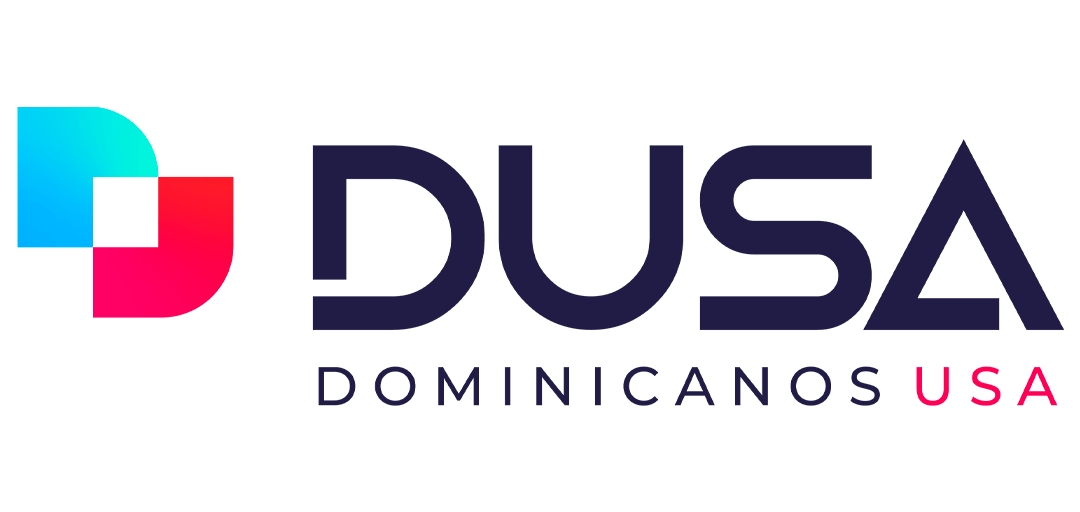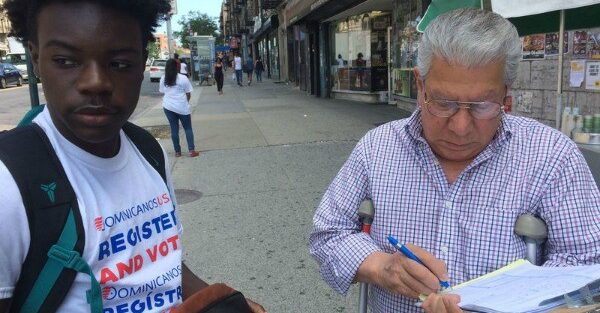
On a steamy Thursday in August, Alexandra Alma, 15, stood poised on the corner of 145th Street and Broadway in Manhattan, armed with a clipboard full of voter registration forms. Her goal was to convince people stop and fill one out.
Her trick: a charm offensive.
“You just have to work your magic,” said Alma, who had already convinced four people to register in under an hour. “You have to look happy. You have to speak to people polite. That’s all.”
Her partner David Simon, also 15, landed his first customer in Ernesto Ortiz. The 77-year-old completed the registration form, and then ranted about the last time he tried to vote. He remembered casting a ballot for President Barack Obama — but then it went downhill.
“My name does not appear no place,” complained Ortiz. “Next election, ‘No you are not here.’ I say, forget it. I never vote again.”
That’s the kind of experience that breeds mistrust — a sense the system is rigged — that has become a theme of this election cycle. The mission of the non-profit group Dominicanos USA is to find people who have had those experiences — people like Ortiz — and bring them into the political process or restore their faith in it.
Over the past three years, the organization has spent roughly $3 million on a voter registration campaign, collecting nearly 130,000 voter registration forms, primarily in New York City and also in Providence, R.I., which like New York has a large Dominican American population.
In fact, Dominican Americans are the largest immigrant group in New York, with a population of more than 673,000, according to the 2014 American Community Survey. That includes both foreign-born and native-born residents.
In the weeks before this year’s general election, WNYC is taking a magnifying glass to our democracy to explore what it takes to participate as a voter. It’s part of a project we’re calling Electionland – with our partners at ProPublica and Google News. This will culminate in a nationwide examination of how our electoral system performs on election day.
To harness the political power of this population, the group’s founders started crunching the numbers at the end of 2013.
“Basically we started out of my apartment, looking at models that have worked in the past,” said Eddie Cuesta, Dominicanos USA’s national director. One of those models is Atrévete Con Tu Voto, a campaign that registered and mobilized voters in New York City’s Puerto Rican community in the early 1990s.
Nydia Velázquez, then the director of the Office of Puerto Rico in New York, launched the campaign to increase Latino political participation though community organizing and voter registration. She was elected to the United States Congress in 1992 as the first Puerto Rican woman from New York, and she’s held the seat ever since.
The Atrévete campaign is cited in a book called Latino Politics in Massachusetts: Struggles, Strategies and Prospects. The authors said the strategy challenges the stereotype that large numbers of immigrants are more interested in politics back home than they are here. In fact, Cuesta says, immigrants who follow politics at home are more easily engaged here.
Cuesta said they hired a data firm out of Washington D.C. called Catalist to help them create a Dominican model, which allowed them to target voter registration efforts in territories where they knew there were large populations of Dominican Americans. The group’s initial funding came from the Vicini family, wealthy Dominican sugar tycoons. But the group has recruited new funders in the last year, including other businesses from the Dominican Republic and the Carnegie Corporation of New York.
Experts in voter registration credit Dominicanos USA with running a meticulous, state-of-the–art operation that also illustrates just how much work it takes to turn a completed registration form into an active voter on the rolls. “Dominicanos USA really sets a gold standard for what citizen groups can do in terms of voter engagement and voter registration,” said Art Chang, chairman of the Campaign Finance Board’s Voter Assistance Committee, which aims to improve New York City elections.
Omar Suarez, the group’s New York director, said each form they collect is scanned for their records and the information is entered into a database. Domincanos USA tries to make it easier on the Board of Elections by thoroughly checking the forms it collects. If a piece of information is missing, or if the handwriting makes it unclear, they will reach out to the individual before submitting the form.
“We also call some of these people, 25 percent of them, to make sure they are who they say they are, and the information is correct,” said Suarez.
The data company Catalist also helps Dominicanos manage this trove of information and track the progress of their registration efforts.
Suarez brings bundles of these forms to the city Board of Elections office on a regular basis. He said they also do quality control: When the final voter rolls come out, Dominicanos matches them against its own records. Suarez says about 80 percent of the registration forms they send in come out on the rolls at the other end.
For that other 20 percent, he said they follow up with the Board of Elections.
The process on the Board of Elections side is similar. Forms are time-stamped and checked against the voter rolls to prevent duplication. Then they are scanned to create an electronic record. From there, staff must type each piece of information correctly in the official voter registration system. But the Board of Elections staff say deciphering people’s handwriting is often the hardest part.
Seeing their community represented
In 2015, Dominicanos USA registered more than 35,000 voters in New York, according to data from Catalist. That’s 15 percent of all new registrations processed by the city Board of Elections, according to the board’s annual report.
Cuesta, the group’s national director, said they don’t favor individual candidates. “We are nonpartisan,” Cuesta said.
But the organization’s leaders do want to see their community represented. And representation is exactly what they got this year.
In June, State Senator Adriano Espaillat won the Democratic primary in the 13th Congressional District by 1,200 votes. Next month, he is expected to become the first Dominican American ever elected to Congress. The district is the historic Harlem seat and has been held by an African American since it was created in 1944. But data shows Dominicanos USA registered 32,500 voters in CD 13 since 2013. It’s likely many of them voted for Espaillat.
Dominicanos USA, though, is also focused on civic engagement at its foundation. It’s organizers conduct voter registration drives outside naturalization ceremonies for any new citizen willing to complete the form. They’ve also recently started to conduct naturalization workshops to help people navigate the process of becoming a new citizen.
“It’s like we’re building something up that’s bigger than all of us. Not just one vote,” said Suarez. “We’re making a huge cultural change, a generational shift, and I want to be part of that.”
Source: WNYC


